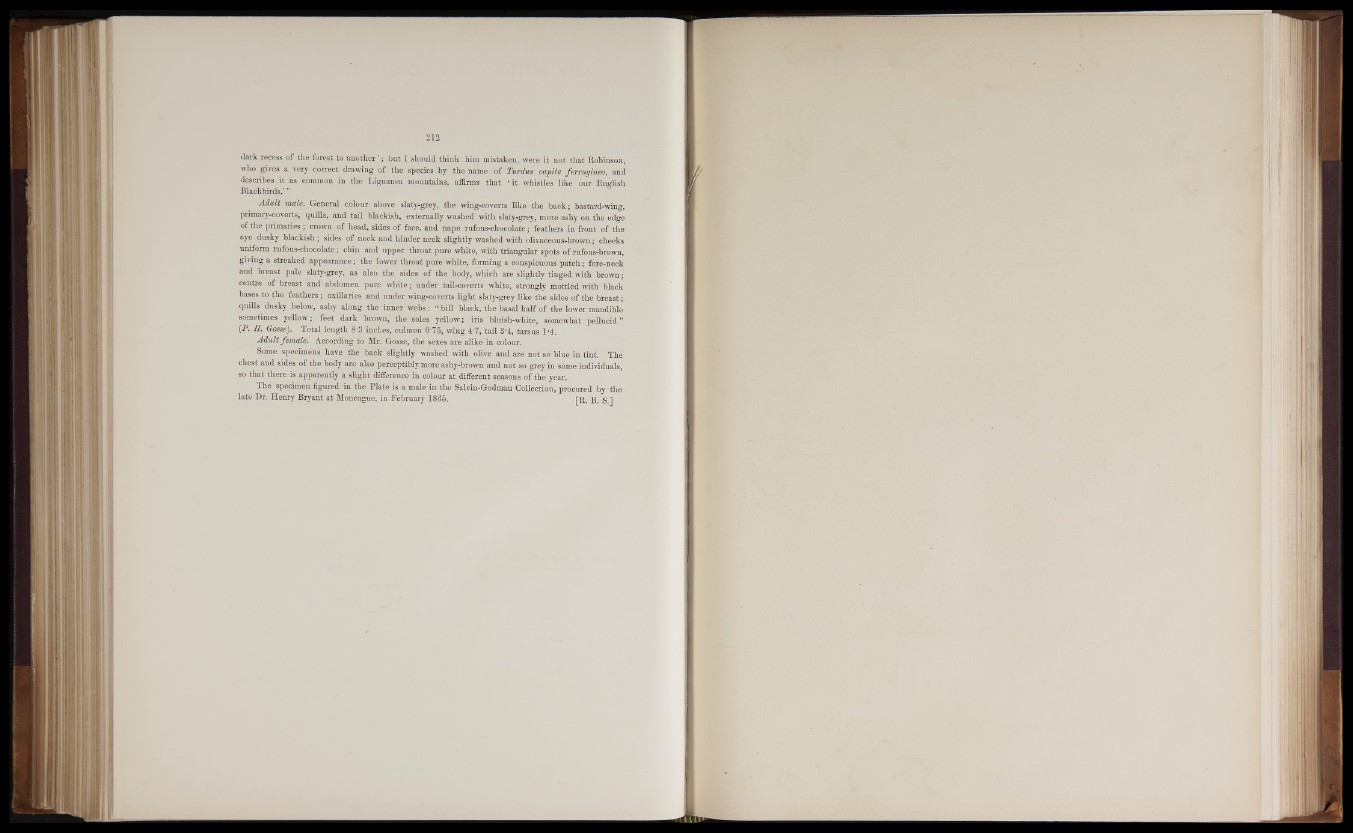
dark recess of the forest to another ’; but I should think him mistaken, were it not that Robinson,
who gives a very correct drawing of the species by the name of Turdus capite ferrugineo, and
describes it as common in the Liguanea mountains, affirms that ‘ it whistles like our English
Blackbirds.” ’
Adult male. General colour above slaty-grey, the wing-coverts like the back; bastard-wing,
primary-coverts, quills, and tail blackish, externally washed with slaty-grey, more ashy on the edge
of the primaries; crown of head, sides of face, and nape rufous-chocolate; feathers in front of the
eye dusky blackish ; sides of neck and hinder neck slightly washed with olivaceous-brown; cheeks
uniform rufous-chocolate; chin and upper throat pure white, with triangular spots of rufous-brown,
giving a streaked appearance; the lower throat pure white, forming a conspicuous patch; fore-neck
and breast pale slaty-grey, as also the sides of the body, which are slightly tinged with brown ■
centre of breast and abdomen pure white; under tail-coverts white, strongly mottled with black
bases to the feathers ; axillaries and under wing-coverts light slaty-grey like the sides of the breast;
quills dusky below, ashy along the inner webs: “ bill black, the basal half o f the lower mandible
sometimes yellow; feet dark brown, the soles yellow; iris bluish-white, somewhat pellucid ”
(P. H. Gosse). Total length 8*3 inches, oilmen 0*75, wing 4-7, tail 3’4, tarsus 1-4.
Adult female. According to Mr. Gosse, the sexes are alike in colour.
Some specimens have the back slightly washed with olive and are not so blue in tint. The
chest and sides of the body are also perceptibly more ashy-brown and not so grey in some individuals,
so that there is apparently a slight difference in colour at different seasons of the year.
The specimen figured in the Plate is a male in the Salvin-Godman Collection, procured by the
late Dr. Henry Bryant at Moneague, in February 1865. [U. B. S.]